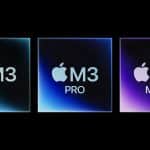PlayStation stands out among the long list of famous Sony brands as one that hasn’t faded or succumbed to a nimbler competitor. Months after hitting global markets, the latest version of the video-game console went on sale Saturday in Tokyo, a big shift from times when Sony was ascendant enough to launch flagship products in Japan first.
The PlayStation 4’s much awaited arrival in Sony Corp.’s home market is the first time Japan did not get a major Sony game machine ahead of other markets. With much riding on the PS4’s success, the commercial advantages of targeting overseas markets outweighed the sentimental pull of a home town launch.
The PS4, Sony’s first video-game console in seven years, went on sale in the U.S. and Europe in November. A small but enthusiastic crowd of about a dozen fans, some in game-inspired costumes, attended a midnight countdown ceremony in Tokyo.
More than 80,000 people watched a live Web broadcast of the event, at the Sony Building in Tokyo’s Ginza district. Most Japanese consumers will be picking up their machines at stores around the nation.
Sony officials say more time was needed to prepare game software attractive for Japanese, but analysts say Japan wasn’t a priority for Sony’s game division.
“I have made you all wait for so long,” Hiroshi Kawano, Sony’s chief of its game business in Japan and Asia, said before handing the console to the first customer in Japan.
The PS4 has proved a hit so far, selling 4.2 million units worldwide last year, outpacing rival Microsoft Corp.’s Xbox One at 3 million.
But analysts say Sony, headed to a 110 billion yen ($1.08 billion) loss for the fiscal year ending in March, needs more than a successful game console to reverse its dimming fortunes.
The company rose from humble beginnings in 1946, with just 20 employees, to become one of the first Japanese companies to go global as the country emerged from the debris of its defeat in World War II to become a manufacturing powerhouse.
But in recent years, out of Sony’s long list of well-known brands – Walkman, Vaio, Bravia, Cyber-shot, Handycam, Aibo – only PlayStation has managed to hold its edge. Its share price is today just one third of its 2008 value.
The Walkman portable audio player lost out to the iPod from Apple Inc. over the last decade, as it fell behind in adopting the MP3 format.
Sony’s Bravia TV section, despite boasting the company’s top notch image technology, has not made money for 10 years straight, despite repeated promises from executives to make it profitable. The Aibo robot dog was scrapped in 2006, under a massive turnaround program, despite an uproar from fans.
Earlier this month, Sony announced it was selling its Vaio personal computer operations in the latest sign of its problems. It is keeping Bravia but making it a subsidiary company.
It’s also cutting its global workforce by about 3 percent or 5,000 people by the end of March 2015, as it restructures its PC, television and other businesses. Some 3,500 of the job losses will be overseas and 1,500 in Japan. That comes on top of the 10,000 jobs cuts Sony announced over the previous year.
“I am just not sure anymore if there is anything Sony makes that can be counted on to produce growth,” said Motohisa Ohno, a technology expert who heads Tokyo-based NewProject, which consults companies on software, Internet branding and other topics.
“I can only hope it is working on something we all know nothing about. It’s so sad to have to say this.”
Ohno, underlining a common sentiment, said the trick is to create a product that pioneers a new market, the way the Walkman did when it first came out.
When the Walkman was invented in 1979, listening to music with earphones on-the-go wasn’t common practice. It was shown off in the first demonstration by a skateboarder.
Sony has fallen behind competitors from Asian countries to which Japan was once an economic and manufacturing success to emulate. Samsung Electronics Co. of South Korea has emerged dominant in household electronics including TVs and newer product categories such as tablets and smartphones.
In ultra-HD TVs called “4K,” the Chinese makers are quickly catching up.
Even the future of the PlayStation 4 is not assured because game players are switching increasingly to mobile devices. The switch to mobile games is especially pronounced in Japan, where Sony has never had to take the threat from Xbox One seriously.
If PS4 sales trail off, that would be a problem. Much of the console’s profits come from game software.
Yasunori Tateishi, who has written books on Sony’s fall from grace, fears that eventually Sony will be reduced to its entertainment business such as music, movies and perhaps games.
The biggest problem is that Sony President Kazuo Hirai has been selling pieces of the company, instead of investing in the future as did his predecessors, including founder Akio Morita, he said.
Hirai has repeatedly said Sony’s smartphones, tablets and imaging technology are still scoring success, and its engineers are working hard to come up with dazzling products. He is promising a turnaround through his reforms.
That hasn’t stopped him from being peppered with questions from investors who have heard engineers are quitting in droves, endangering Sony’s ability to come up with innovation. Hirai has not directly addressed such questions.
“Mr. Hirai has not scripted out a scenario for the future,” Tateishi said, stressing that PlayStation 4 will not be enough to save Sony’s electronics. “It’s just a game machine.”
Associated Press/AP Online













